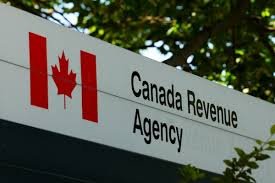When you convert your RRSP into a Registered Retirement Income Fund (RRIF), you become subject to specific withdrawal rules.
In 2025, retirees must understand minimum withdrawal amounts, taxation, withholding, and optional strategies.
This article lays out what the CRA requires and what flexibility you have under current rules.
When must you start RRIF withdrawals in 2025?
Once you establish a RRIF, you begin making withdrawals the following calendar year.
You are not required to take anything in the year you convert your RRSP to a RRIF.
For example, if you convert your RRSP to a RRIF in 2024, your first required withdrawals must start in 2025.
What is the minimum withdrawal amount for a RRIF in 2025?
You must withdraw at least a minimum amount each year. The calculation:
- Start with the fair market value (FMV) of your RRIF on January 1 (or the beginning of the year).
- Multiply that value by a prescribed factor (a percentage) based on your age (or, if you previously elected, your spouse or common-law partner’s age).
- The result is your minimum required withdrawal for that year.
CRA provides a chart of prescribed factors by age. For example, at age 65, the factor is 0.0400 (i.e., 4.00%).
If you choose to base withdrawal factors on your spouse’s age (if younger), that election must be made before your first withdrawal and cannot be changed.
Are there maximum limits or restrictions on RRIF withdrawals?
There is no maximum withdrawal limit (other than the value in your RRIF). You can withdraw more than the minimum if desired.
However, withdrawals above the minimum may have withholding tax applied at the time of withdrawal (depending on your province and the amount withdrawn).
If you only withdraw the minimum required amount, your financial institution generally does not withhold tax up front.
How is withholding tax applied to excess RRIF withdrawals?
When you withdraw more than the minimum, the excess portion is subject to withholding tax.
For most provinces (except Québec), the federal withholding rates are approximately:
- 10% on amounts up to $5,000
- 20% on amounts between $5,001 and $15,000
- 30% on amounts above $15,000
In Québec, provincial withholding applies too, and the thresholds differ.
Note: Withholding tax is a prepayment. The actual tax you owe depends on your total income and marginal tax rate when you file your return.
How withdrawals are taxed and reported
All amounts you withdraw (minimum or more) from your RRIF are fully taxable income in the year you receive them.
You will get a T4RIF slip from your RRIF carrier reporting the amounts withdrawn. That slip is used when you file your tax return.
If you withdraw more than the minimum, some of that excess may be taxed in the hands of the contributor under the attribution rules (especially relevant for a spousal RRIF), if certain conditions are met.
From age 65 onward, RRIF withdrawals may qualify as “eligible pension income,” enabling you to use the pension income tax credit (in many jurisdictions) up to $2,000.
Can you do non-cash withdrawals?
Yes. Your RRIF may allow in-kind withdrawals, meaning you transfer investments directly rather than selling them. The institution must agree.
This is useful if you don’t want to incur transaction fees or sell during unfavorable market conditions.
Recent proposals and possible changes in 2025
In 2025, the federal Liberal Party proposed a temporary 25% reduction in required RRIF minimum withdrawals for one year, to ease pressure on retirees during market volatility.
However, as of now, that reduction has not been implemented into law. Retirees should monitor government announcements for formal changes.
Strategies retirees should consider under current rules
- Delay withdrawals if market performance is weak, provided your financial institution allows it, but ensure you at least meet the minimum.
- Use your spouse’s age (if younger) to lower required minimums — election must be made before first withdrawal.
- Avoid withdrawing too much above the minimum unless needed, to minimize withholding tax and preserve tax efficiency.
- Use in-kind withdrawals when practical to avoid forced selling in bad markets.




